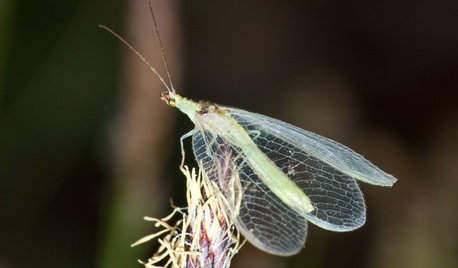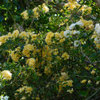Roses near trees
annesfbay
11 years ago
Related Stories

FURNITUREHow to Find Great Antiques Near You
Experience the thrill of the hunt with these tips for finding the best sources of antiques in your area
Full Story
GARDENING GUIDESLook Out for Lacewings: Beneficial Insects Coming to a Garden Near You
Lacewings are delicate insects that produce alligator-like, hungry offspring that devour aphids and other garden pests
Full Story
BACKYARD IDEASTake a Peek: A Peaceful Backyard Near Puget Sound
Behind a screen of bamboo trees, discover a peaceful garden retreat in the Pacific Northwest
Full Story
HOUZZ TOURSHouzz Tour: Cozy Mountain Retreat Near Lake Tahoe
An observation deck, a gourmet kitchen and generous helpings of windows make this California vacation home a storm watcher's paradise
Full Story
PLANTING IDEASGreat Garden Combo: Rose + Clematis for Small-Space Impact
We all need somebody to lean on. And when a rose supports a climbing vine, the results can totally transform a small garden
Full Story
HOUZZ TOURSMy Houzz: Super Efficiency and Serenity Near the Florida Surf
It can withstand a hurricane and earned LEED Platinum certification, but this island home knows how to chill too
Full Story
GARDENING GUIDESWhat Kind of Roses Should You Grow?
Want to add the beauty of roses to your garden? Find out which ones, from old-fashioned to modern, are right for you
Full Story
HEALTHY HOME6 Tips From a Nearly Zero-Waste Home
Lower your trash output and increase your quality of life with these ideas from a mom who did it to the max
Full Story
KITCHEN DESIGN9 Ideas Coming to a Kitchen Near You
2012 kitchen updates: Tall, solid-surface backsplashes, smarter storage, handy task stations and sheen instead of shine
Full Story
LIFECould Techies Get a Floating Home Near California?
International companies would catch a big business break, and the apartments could be cool. But what are the odds of success? Weigh in here
Full StorySponsored
Columbus Area's Luxury Design Build Firm | 17x Best of Houzz Winner!






roseseek
annesfbayOriginal Author
Related Discussions
can i really not plant roses near a birch??
Q
Planting Roses Near Trees ?
Q
Climber in a tree
Q
Planting a new rose of same variety near established rose
Q
roseseek
annesfbayOriginal Author
eahamel
ingrid_vc so. CA zone 9
seil zone 6b MI
annesfbayOriginal Author
rosefolly
roseseek
sherryocala
jimofshermanoaks
Poorbutroserich Susan Nashville
erin1000
Poorbutroserich Susan Nashville
melissa_thefarm
Alana8aSC
Alana8aSC
Alana8aSC
Alana8aSC
Alana8aSC
Alana8aSC
sidos_house
Alana8aSC
hoovb zone 9 sunset 23
Alana8aSC
roseseek
sidos_house
roseseek
melissa_thefarm
roseseek
harborrose_pnw
roseseek
annesfbayOriginal Author
harborrose_pnw
roseseek
User
roseseek
cath41
roseseek
annesfbayOriginal Author
sidos_house
roseseek